Once Upon a Time in the West
8.2 /10 1 Votes
98% Rotten Tomatoes 80% Metacritic Country United StatesItalySpain | 8.6/10 IMDb 2.5/4 Roger Ebert Duration Language English | |||||||||||||||||||||||||||||||||
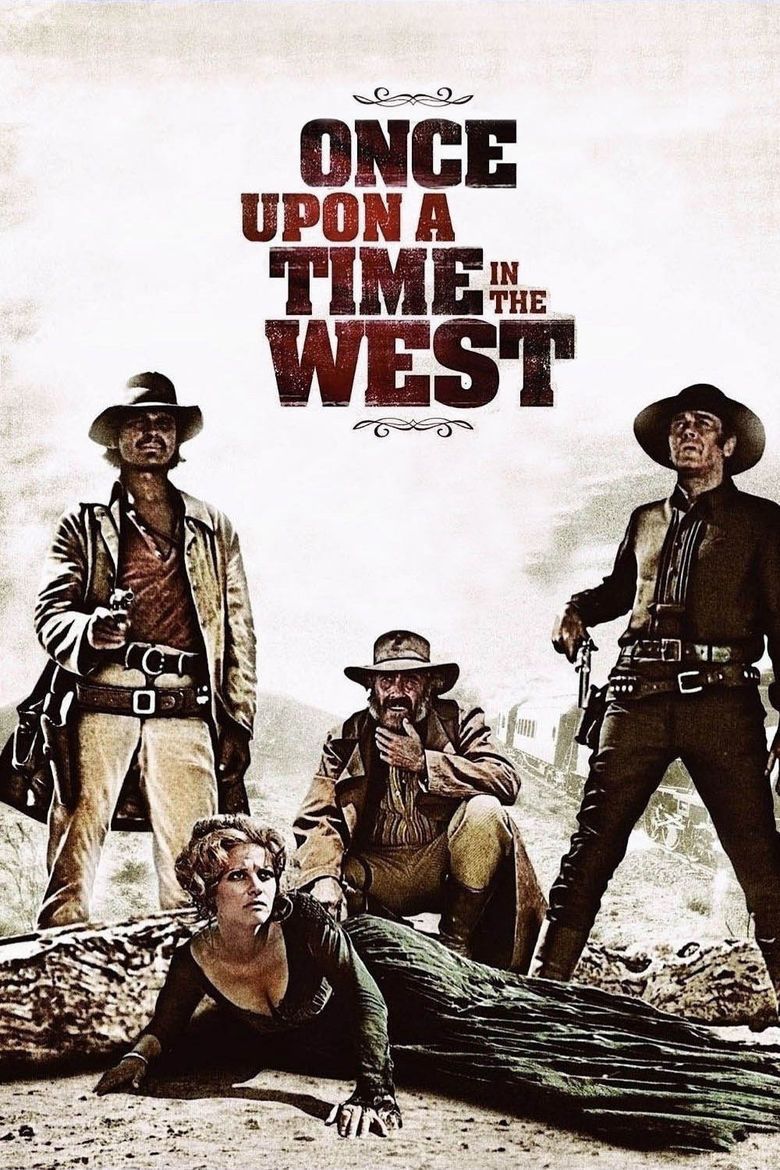 | ||||||||||||||||||||||||||||||||||
Release date 21 December 1968 (1968-12-21) (Italy) Writer Sergio Leone (screenplay), Sergio Donati (screenplay), Dario Argento (from a story by), Bernardo Bertolucci (from a story by), Sergio Leone (from a story by), Mickey Knox (dialogue: English version) Cast (Frank), (Jill McBain), (Cheyenne), (Harmonica), (Morton (railroad baron)), (Sam) Similar movies Blackhat , The Great Silence , , The Boy Next Door , Saving Private Ryan , Snow White and the Seven Dwarfs Tagline There were three men in her life. One to take her... one to love her... and one to kill her. | ||||||||||||||||||||||||||||||||||
Once upon a time in the west 6 8 movie clip what you re after 1968 hd
Once Upon a Time in the West (Italian: C'era una volta il West) is a 1968 epic Spaghetti Western film co-written and directed by Sergio Leone. It stars Henry Fonda, cast against type, as the villain, Charles Bronson as his nemesis, Claudia Cardinale as a newly widowed homesteader, and Jason Robards as a bandit. The screenplay was written by Sergio Donati and Leone, from a story by Dario Argento, Bernardo Bertolucci and Leone. The widescreen cinematography was by Tonino Delli Colli, and the acclaimed film score was by Ennio Morricone.
Contents
- Once upon a time in the west 6 8 movie clip what you re after 1968 hd
- Once upon a time in the west 7 8 movie clip harmonica s flashback 1968 hd
- Plot
- Cast
- Origins
- Style and pacing
- Locations
- Casting
- Music
- Reception
- European release
- American release
- Directors cut
- Home video releases
- References

After directing The Good, the Bad and the Ugly, Leone decided to retire from Westerns and desired to produce his film based on The Hoods, which eventually became Once Upon a Time in America. However, Leone accepted an offer from Paramount Pictures to provide access to Henry Fonda and to use a budget to produce another Western film. He recruited Bertolucci and Argento to devise the plot of the film in 1966, researching other Western films in the process. After Clint Eastwood turned down an offer to play the movie's protagonist, Bronson was offered the role. During production, Leone recruited Donati to rewrite the script due to concerns over time limitations.

The original version by the director was 166 minutes (2 hours and 46 minutes) when it was first released on December 21, 1968. This was the version that was to be shown in European cinemas and was a box office success. For the US release on May 28, 1969, Once Upon a Time in the West was edited down to 145 minutes (2 hours and 25 minutes) by Paramount and was a financial flop. The film is considered by some to be the first installment in Leone's Once Upon a Time Trilogy, followed by Duck, You Sucker!, called Once Upon a Time... the Revolution in parts of Europe, and Once Upon a Time in America, though the films do not share any characters in common.
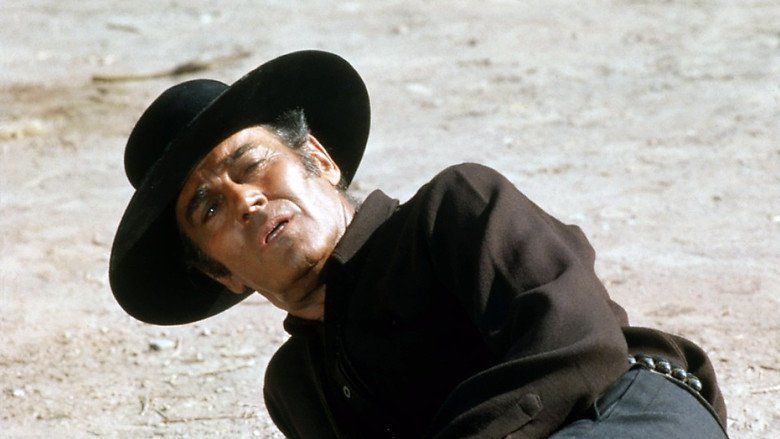
The film is now generally acknowledged as a masterpiece and one of the greatest films ever made. In 2009, the film was selected for preservation in the United States National Film Registry by the Library of Congress as being “culturally, historically or aesthetically significant”.
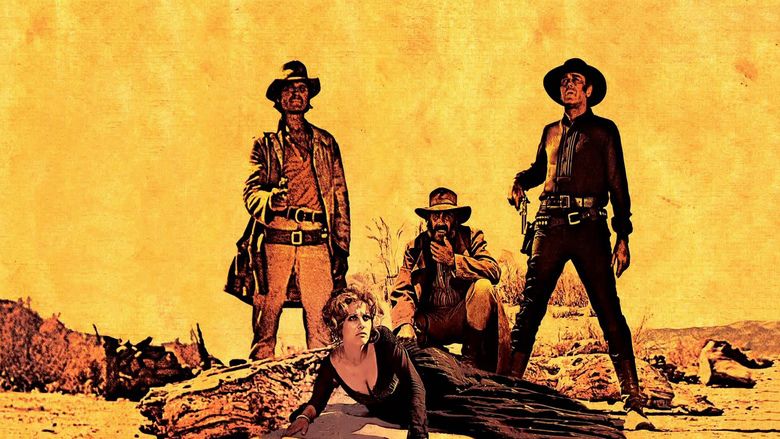
Once upon a time in the west 7 8 movie clip harmonica s flashback 1968 hd
Plot

The film portrays two conflicts that take place around Flagstone, a fictional town in the American Old West: a land battle related to construction of a railroad, and a mission of vengeance against a cold-blooded killer. A struggle exists for Sweetwater, a piece of land near Flagstone containing the region's only water source. The land was bought by Brett McBain (Frank Wolff), who foresaw that the railroad would have to pass through that area to provide water for the steam locomotives. When crippled railroad tycoon Morton (Gabriele Ferzetti) learns of this, he sends his hired gun Frank (Henry Fonda) to intimidate McBain to move off the land, but Frank instead kills McBain and his three children, planting evidence to frame the bandit Cheyenne (Jason Robards). It appears the land has no owner; however, a former prostitute (Claudia Cardinale) arrives from New Orleans, revealing she is Jill McBain, Brett's new wife and the owner of the land.
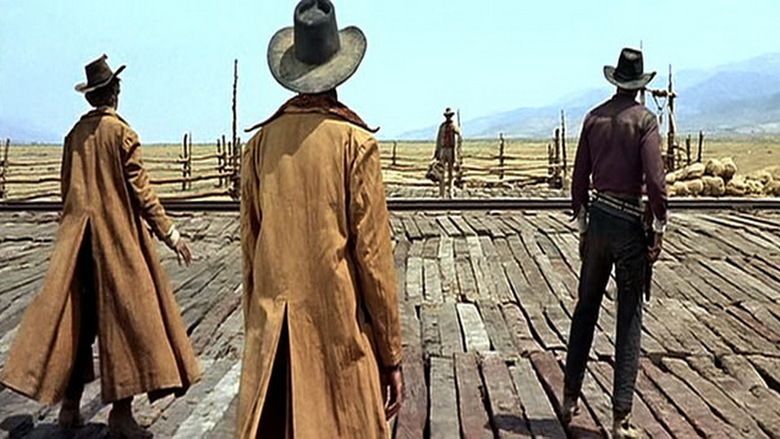
Meanwhile, a mysterious harmonica-playing gunman (Charles Bronson), whom Cheyenne later dubs "Harmonica", pursues Frank. In the film's opening scene, Harmonica kills three men sent by Frank to kill him. In a roadhouse on the way to Sweetwater, he informs Cheyenne that the three gunfighters appeared to be posing as Cheyenne's men.
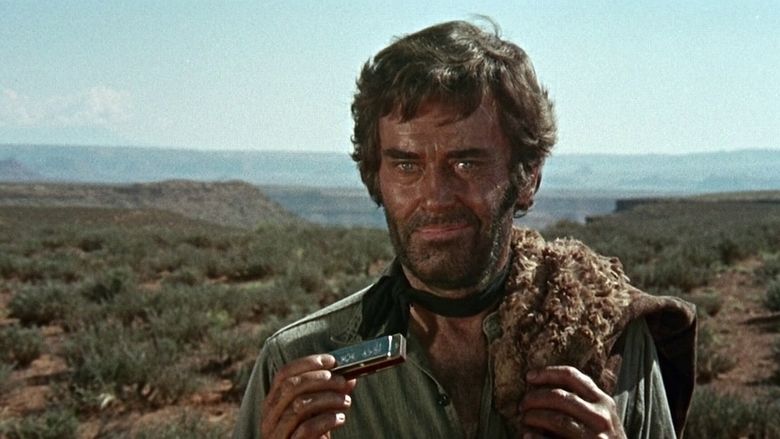
Back at Sweetwater, construction materials are delivered to build a railroad station and a small town. Harmonica explains that Jill will lose Sweetwater unless the station is built by the time the track's construction crews reach that point, so Cheyenne puts his men to work building it.
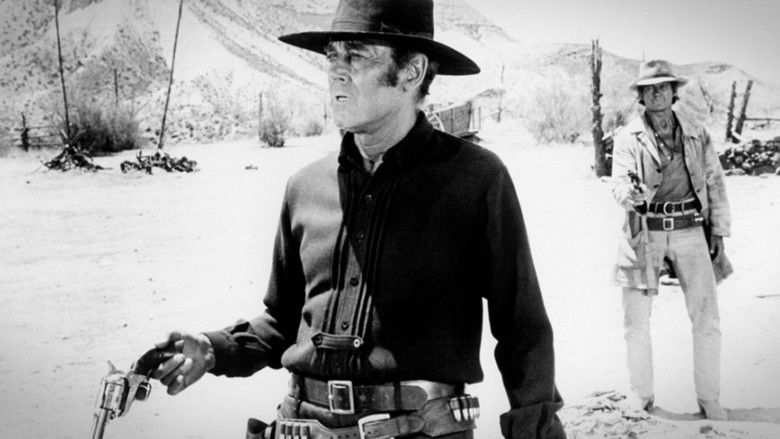
Frank turns against Morton, who wanted to make a deal with Jill; Morton's disability makes him unable to fight back. After raping Jill, Frank forces her to sell the property in an auction. He tries to buy the farm cheaply by intimidating the other bidders, but Harmonica arrives, holding Cheyenne at gunpoint and makes a much higher bid based on his reward money for delivering Cheyenne to the authorities. Harmonica rebuffs an offer by Frank to buy the farm from him for one dollar more than he paid at the auction. As Cheyenne is placed on a train bound for the Yuma prison, two members of his gang purchase one-way tickets for the train, intending to help him escape.
Frank's men betray and ambush him, having been paid by Morton to turn against him, but—much to Jill's outrage—Harmonica helps Frank kill them, intending to kill Frank himself. Frank returns to Morton, only to find that he and the rest of Frank's men have been killed in a battle with Cheyenne's gang. Frank then goes to Sweetwater to confront Harmonica. On two occasions, Frank has asked Harmonica who he is, but both times Harmonica refused to answer him. Instead, he mysteriously quoted names of men Frank has murdered. This time, Harmonica says he will reveal who he is "only at the point of dying". The two men position themselves for a gun duel, at which point Harmonica's motive for revenge is revealed in a flashback:
A younger Frank, already a cruel bandit, is forcing a boy to support on his shoulders his older brother, whose neck is in a noose strung from an arch. As the boy struggles to hold his brother's weight, Frank stuffs a harmonica into the boy's mouth and tells him to play. The older brother curses Frank and kicks his young brother away and dies. The boy (Harmonica) collapses onto the ground clutching the harmonica in his mouth.
Harmonica draws first and shoots Frank. As he lies dying, Frank again asks who he is, and Harmonica stuffs his harmonica into Frank's mouth, like Frank did to him when he was a child. Frank suddenly remembers Harmonica as a boy, collapses to the ground clutching the harmonica in his mouth and dies. Harmonica and Cheyenne say goodbye to Jill, who is supervising construction of the railway station as the track-laying crews reach Sweetwater. Cheyenne collapses, revealing that he was mortally wounded by Morton during the fight with Frank's gang. As the work train arrives, Jill carries water to the rail workers, while Harmonica rides away with Cheyenne's dead body.
Cast
With the death of Gabriele Ferzetti in 2015, Claudia Cardinale is the sole surviving member of the film's main cast.
Origins
After making his American Civil War epic The Good, the Bad and the Ugly, Leone had intended to retire from making Westerns, believing he had said all he wanted to say. He had come across the novel The Hoods by the pseudonymous "Harry Grey", an autobiographical book based on the author's own experiences as a Jewish hood during Prohibition, and planned to adapt it into a film (this would eventually, seventeen years later, become his final film, Once Upon a Time in America). Leone though was offered only Westerns by the Hollywood studios. United Artists (who had produced the Dollars Trilogy) offered him the opportunity to make a film starring Charlton Heston, Kirk Douglas and Rock Hudson, but Leone refused. However, when Paramount offered Leone a generous budget along with access to Henry Fonda—his favorite actor, and one whom he had wanted to work with for virtually all of his career—Leone accepted the offer.
Leone commissioned Bernardo Bertolucci and Dario Argento—both of whom were film critics before becoming directors—to help him develop the film in late 1966. The men spent much of the following year watching and discussing numerous classic Westerns such as High Noon, The Iron Horse, The Comancheros, and The Searchers at Leone's house, and constructed a story made up almost entirely of "references" to American Westerns.
Ever since The Good, the Bad and the Ugly, which originally ran for three hours, Leone's films were usually cut (often quite dramatically) for box office release. Leone was very conscious of the length of Once Upon a Time in the West during filming and later commissioned Sergio Donati, who had worked on several of Leone's other films, to help him refine the screenplay, largely to curb the length of the film towards the end of production. Many of the film's most memorable lines of dialogue came from Donati, or from the film's English dialogue adapter, expatriate American actor Mickey Knox.
Style and pacing
For Once Upon a Time in the West, Leone changed his approach over his earlier Westerns. Whereas the "Dollars" films were quirky and up-tempo, a celebratory yet tongue-in-cheek parody of the icons of the Wild West, this film is much slower in pace and sombre in theme. Leone's distinctive style, which is very different from, but very much influenced by, Akira Kurosawa's Sanshiro Sugata (1943), is still present but has been modified for the beginning of Leone's second trilogy, the so-called Once Upon a Time Trilogy. The characters in this film are also beginning to change markedly over their predecessors in the Dollars Trilogy. They are not quite as defined and, unusual for Leone characters up to this point, they begin to change (or at least attempt to) over the course of the story. This signals the start of the second phase of Leone's style, which would be further developed in Duck, You Sucker! and Once Upon a Time in America.
The film features long, slow scenes in which there is very little dialogue and little happens, broken by brief and sudden violence. Leone was far more interested in the rituals preceding violence than in the violence itself. The tone of the film is consistent with the arid semi-desert in which the story unfolds, and imbues it with a feeling of realism that contrasts with the elaborately choreographed gunplay.
Sergio Leone liked to tell the story of a cinema in Paris where the film ran uninterrupted for two years. When he visited this theatre, he was surrounded by fans who wanted his autograph, as well as the projectionist, who was less than enthusiastic. Leone claimed the projectionist told him "I kill you! The same movie over and over again for two years! And it's so SLOW!"
Locations
Most of the film was shot in Cinecittà studios, Rome. The brick arch where Bronson's character flashbacks to his youth and the original lynching incident was built near a small airport fifteen miles north of Monument Valley, in Utah and two miles from U.S. Route 163 (which links Gouldings Lodge and Mexican Hat). The opening sequence with the three gunmen meeting the train was one of the sequences filmed in Spain. Shooting for scenes at Cattle Corner Station, as the location was called in the story, was scheduled for four days and was filmed at the 'ghost' train station in the municipality of La Calahorra, county of Gaudix, near Guadix, in the Province of Granada, Spain, as were the scenes of Flagstone, and shooting for the scenes in the middle of the railway were filmed along the Guadix - Hernan Valle railway line.
Casting
Fonda did not accept Leone's first offer to play Frank, so Leone flew to New York to convince him, telling him: "Picture this: the camera shows a gunman from the waist down pulling his gun and shooting a running child. The camera tilts up to the gunman's face and...it's Henry Fonda." After meeting with Leone, Fonda called his friend Eli Wallach, who had co-starred in The Good, the Bad and the Ugly. Wallach advised Fonda to do the film, telling him "You will have the time of your life."
When he accepted the role, Fonda came to the set with brown contacts and facial hair. Fonda felt having dark eyes and facial hair would blend well with his character's evil and also help the audience to accept this "new" Fonda as the bad guy, but Leone immediately told him to remove the contacts and facial hair. Leone felt that Fonda's blue eyes best reflected the cold, icy nature of the killer. It was one of the first times in a Western film where the villain would be played by the lead actor.
Leone originally offered the role of Harmonica to Clint Eastwood; when he turned it down, Leone hired Charles Bronson who had originally been offered and turned down the part of the Man with No Name in A Fistful of Dollars. James Coburn was also approached for Harmonica, but demanded too much money.
Robert Ryan was offered the role of the Sheriff played by Keenan Wynn. Ryan initially accepted, but backed out after being given a larger role in Sam Peckinpah's The Wild Bunch.
Enrico Maria Salerno and Robert Hossein were both offered the role of Morton before Gabriele Ferzetti was cast; Hossein had accepted, but had to drop out for a theatre commitment. Ferzetti, who considers it one of his best roles, referred to his casting as "Fate, Destiny" in an interview for the DVD release.
Actor Al Mulock (featured as Knuckles in the opening train sequence, as well as in Leone's The Good, the Bad and the Ugly) committed suicide during shooting of the film by leaping from his Guadix hotel room in full costume. Frank Wolff, the actor who plays McBain, also committed suicide in a Rome hotel in 1971.
Following the film's completion, Once Upon a Time in the West was dubbed into several languages, including Italian, French, German, Spanish and English. For the English dub, the voices of much of the American cast, including Fonda, Bronson, Jason Robards, Jack Elam, Wynn, Wolff and Lionel Stander, were used. However, the rest of the cast had to be dubbed by other actors, including Ferzetti, who was dubbed by actor Bernard Grant (who is believed to have voiced Gian Maria Volontè and Aldo Giuffrè in the Dollars Trilogy), and Claudia Cardinale, who was voiced by Grant's wife, Joyce Gordon.
Music
The music was written by composer Ennio Morricone, Leone's regular collaborator, who wrote the score under Leone's direction before filming began. As in The Good, the Bad and the Ugly, the haunting music contributes to the film's grandeur and, like the music for The Good, the Bad and the Ugly, is considered one of Morricone's greatest compositions.
The film features leitmotifs that relate to each of the main characters (each with their own theme music) as well as to the spirit of the American West. Especially compelling are the wordless vocals by Italian singer Edda Dell'Orso during the theme music for the Claudia Cardinale character. It was Leone's desire to have the music available and played during filming. Leone had Morricone compose the score before shooting started and would play the music in the background for the actors on set.
Except for about a minute of the "Judgment" motif, before Harmonica kills the three outlaws, no soundtrack music is played until at the end of the second scene, when Henry Fonda makes his first entry. During the beginning of the film, Leone instead uses a number of natural sounds, for instance a turning wheel in the wind, sound of a train, grasshoppers, shotguns while hunting, wings of pigeons, etc., in addition to the harmonica played by Bronson's character, since that sound is "explained" by the fact that the sound of the harmonica is diegetic rather than a true soundtrack.
Reception
Though less popular in the US than the earlier Dollars Trilogy, Once Upon a Time in the West has gained a cult following around the world, particularly among cineastes and filmmakers. In the late 1960s and 1970s, it was re-evaluated by young filmmakers and critics, many of whom called it a masterpiece. Directors including Quentin Tarantino, Martin Scorsese, George Lucas, John Carpenter, Vince Gilligan, and John Boorman have spoken about the influence that the film had on them. It is now considered one of the greatest films ever made and some critics consider it to be the finest Western and Sergio Leone's finest accomplishment as a director. Review aggregation website Rotten Tomatoes retrospectively collected reviews from 56 critics and gave the film a score of 98%. Once Upon a Time in the West can be found on numerous film polls and 'best of' lists.
The film is recognized by American Film Institute in these lists:
European release
The movie was a massive hit in France and was easily the most successful film released there in 1969. It sparked a brief fashion trend for duster coats which took such proportions that Parisian department stores such as Au Printemps had to affix signs on escalators warning patrons to keep their "maxis," as they were called, clear from the edges of moving steps to prevent jamming.
American release
In the US, Paramount edited the film to about 145 minutes for the wide release, but the film underperformed at the box office, earning $2.1M in rentals in North America.
The following scenes were cut for the American release:
Otherwise, one scene was slightly longer in the US version than in the international film release:
Following the opening duel (where all four gunmen fire and fall), Charles Bronson's character stands up again showing that he had only been shot in the arm. This part of the scene had been originally cut by director Sergio Leone for the worldwide theatrical release. It was added again for the U.S. market because the American distributors feared American viewers would not understand the story otherwise, especially since Harmonica's arm wound is originally shown for the first time in the scene at the trading post which was cut for the shorter U.S. version.
The English-language version was restored to approximately 165 minutes for a re-release in 1984, and for its video release the following year.
Director's cut
In Italy, a 175-minute director's cut features a yellow tint filter, and several scenes augmented with additional material. This director's cut was released on home video until the early 2000s, and still airs on TV, but more recent home video releases have used the international cut.
Home video releases
After years of public requests, Paramount released a 2-Disc "Special Collector's Edition" of Once Upon a Time in the West on November 18, 2003, with a running time of 165 minutes (158 minutes in some regions). This release is the color 2.35:1 aspect ratio version in anamorphic wide-screen, closed captioned and Dolby. Commentary is also provided by film experts and historians including John Carpenter, John Milius, Alex Cox, film historian and Leone biographer Sir Christopher Frayling, Dr. Sheldon Hall, as well as actors Claudia Cardinale and Gabriele Ferzetti, and director Bernardo Bertolucci, a co-writer of the film.
The second disc has special features, including three recent documentaries on several aspects of the film:
The film was released on Blu-ray on May 31, 2011.
References
Once Upon a Time in the West WikipediaOnce Upon a Time in the West IMDbOnce Upon a Time in the West Rotten TomatoesOnce Upon a Time in the West Roger EbertOnce Upon a Time in the West MetacriticOnce Upon a Time in the West themoviedb.org
